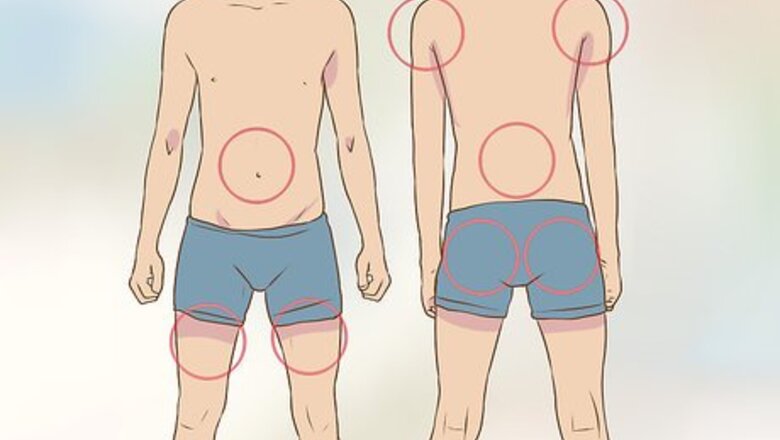
views
Selecting the Injection Site

Know the appropriate areas for injecting insulin. The abdomen is the most commonly used area for insulin injections. You can also use the side and front of your thighs, the backs of your upper arms, the cheeks of your buttock, or – if someone is doing the injection for you – your lower back right above your waist. You will rotate through different areas for injecting, so familiarize yourself with your options.
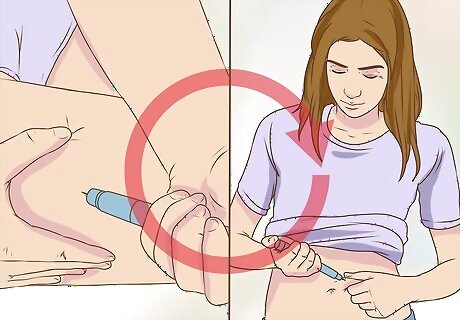
Rotate your injection site. Injecting into the same area over and over can cause lumps or fatty buildup in the area, which can interfere with your medication. You can avoid this by rotating your injection sites. Pick an appropriate body region and use that area for one to two weeks, but move around within that area with each injection. Inject at least 2 inches away from your last injection site. It may help to keep a chart of where you inject yourself so that you can remember. For instance, you can note that this week you injected into different areas of your right thigh, so that next week you can move to your left thigh or abdomen. Rotate in a clockwise or counterclockwise way to help keep track of your injection sites.

Avoid problem areas. Do not inject yourself on an area that is already bruised, swollen, sore, or into an open wound. Inject at least 3 to 4 inches away from your belly button, and at least 2 inches away from any scars. Also, avoid injecting into muscles that you will be using because this will speed up absorption of the insulin. For example, don’t inject insulin into your upper arm before playing tennis.
Setting Up Your Injection Properly

Get clear instructions from your doctor. Before you first use your insulin pen, ask your doctor any questions you have and be sure to get clear instructions from them. Be sure you know what dose of insulin to use at what time of day, how often to check your sugars, and where you should inject yourself. Ask about anything you don’t understand or need clarification on, such as, “Am I supposed to check my sugar before I eat, or after I eat?” or, “Can you show me again which part of my tummy to inject?”
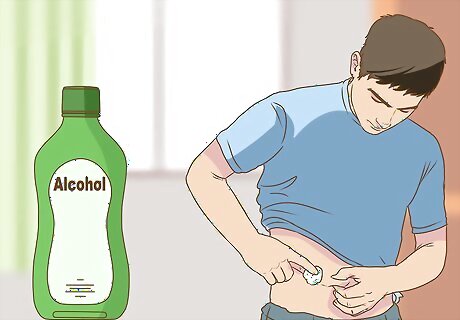
Clean the injection site with alcohol. Use an alcohol swab or a cotton ball covered in rubbing alcohol to clean the area you are going to inject. Let the alcohol air dry. Wash your hands before using your pen, as well.
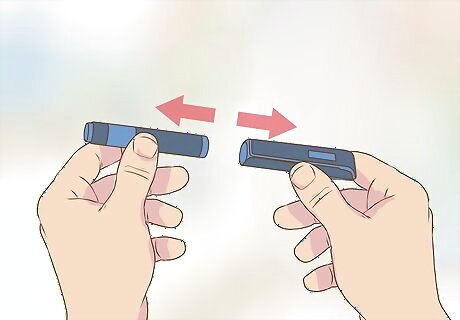
Remove the pen cover or pen cap. Intermediate-acting insulin usually appears to have a milky consistency. If this is the case, roll the pen between your hands to mix the insulin until it appears even throughout (usually about 15 seconds).
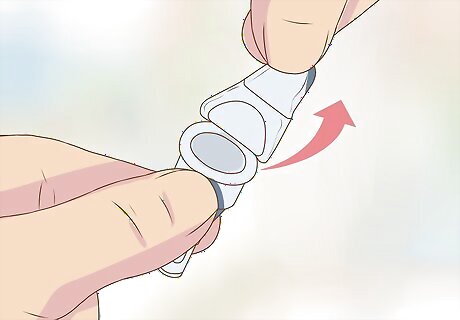
Remove the paper tab from the plastic container holding the pen needle. Needles for insulin pens come in different sizes, and should be chosen based on your body type. Your doctor will tell you which needle size to use. Be sure you check to make sure you get the right size.
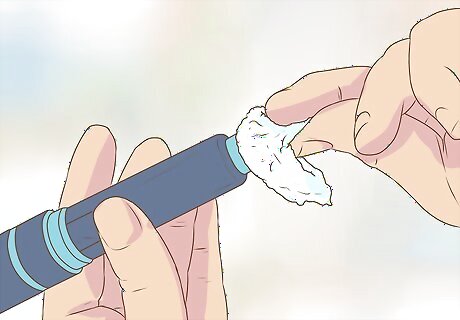
Clean the pen with alcohol. Clean the area where the needle twists onto the pen with an alcohol swab or alcohol on a cotton ball.
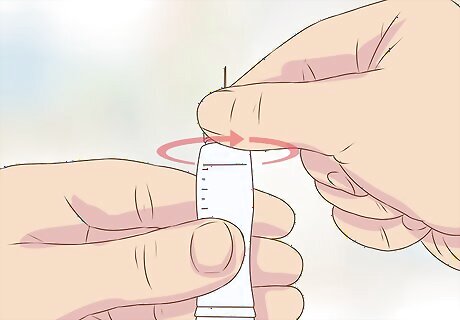
Prepare the needle. Screw the needle tightly onto the insulin pen by rotating it clockwise. Pull off the big outer needle cap, but do not throw it away. Pull off the inner needle cap and dispose of it. Be careful not to bend or damage the needle before use.

Prime the pen to remove air bubbles. Turn the dosing knob to select a dose of 2 units. With the needle pointed up, push the dosing knob all the way in. Watch for a drop of insulin to appear at the tip of the needle. If no insulin appears, repeat the process. Make sure the dose is set back at 0 when this is complete. If you attempt this several times and still do not see insulin appear at the needle tip, check the pen for bubbles. Try changing the needle and attempting this again.
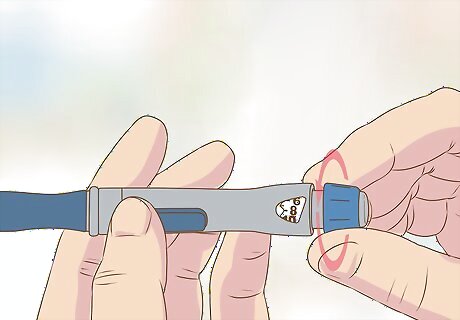
Turn the dosage selector dial to the appropriate units. There is no specific “right” number of units that applies to every person. You and your doctor should discuss your diabetes and blood sugar and determine the right number of units of insulin for you. It’s possible that you will use different amounts at different times of the day, so be sure to always set the dosage to the correct units. Always double check the dose window to assure you are getting the proper dose before injecting.
Performing the Injection

Calm yourself down if you’re nervous. Even if you’ve done this 100 times, you might still get nervous about using a needle. Calm your nerves by listening to some nice music, doing deep breathing exercises, meditating, lighting aromatherapy candles, or giving yourself some positive affirmations like, “I’m in charge of my health and I take great care of myself!”
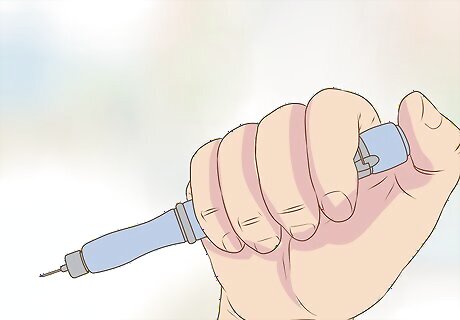
Prepare to inject yourself. Hold the pen in your dominant hand with your fingers curled around the pen, the needle pointing down, and your thumb hovering over the dosing button. With your other hand, pinch about 1 ½ inches of the area of skin you are going to inject so it is gently pulled up higher than the skin around it. Do not squeeze your skin hard, which can interfere with the injection.

Inject the insulin. Insert the needle into the pinched skin at a 90° angle to your body. Do not jab yourself hard, but insert the needle quickly and make sure the needle is all the way into your skin. Let go of the skin you are pinching with the needle still in place. Press the dosing knob all the way down, until the 0 lines up with the dose arrow. Hold the needle in place for 10 seconds. Keep the dose button pushed down until you remove the needle. Remove the needle quickly, pulling straight out of the skin. Don’t massage the place you just injected yourself. If there is tenderness or a bit of blood, dab it gently with a tissue.
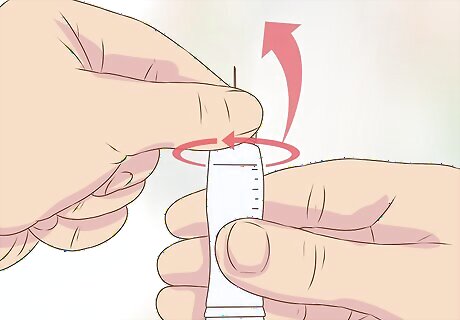
Remove the used needle. Put the large needle cap carefully on the needle. Twist the covered needle to unscrew it. Throw the used needle away in a sharps container. If you don’t have a sharps container, use an alternate hard container for old needles such as an empty aspirin bottle or laundry detergent bottle.

Store your pen appropriately. Store opened insulin pens at a controlled room temperature. Store unopened insulin pens in a refrigerator. Be sure to keep your pen in a safe place that children and pets cannot access. It is good practice to keep your pen in the same place every day so you always know where to find it. Do not expose insulin to very hot or cold weather conditions or direct sunlight. If your insulin pen is exposed to these conditions, then discard it.
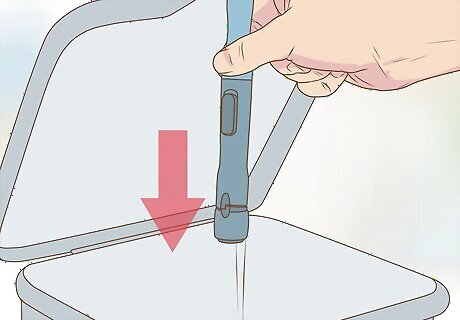
Throw away expired insulin. Different types of insulin last for different lengths of time being stored at room temperature. Check expiration dates on your insulin, and get a new pen if yours has been in storage longer than the suggested length of time. The number of days you can use your pen depends on each manufacturer. Pens last 7 to 28 days if stored at a controlled room temperature. Consult with your doctor or pharmacist about the specifics on your pen. Always follow instructions on the packaging. The expiration date printed on the pen package does not apply once it's no longer stored in the refrigerator. After that, it must be disposed of after 28 days.




















Comments
0 comment